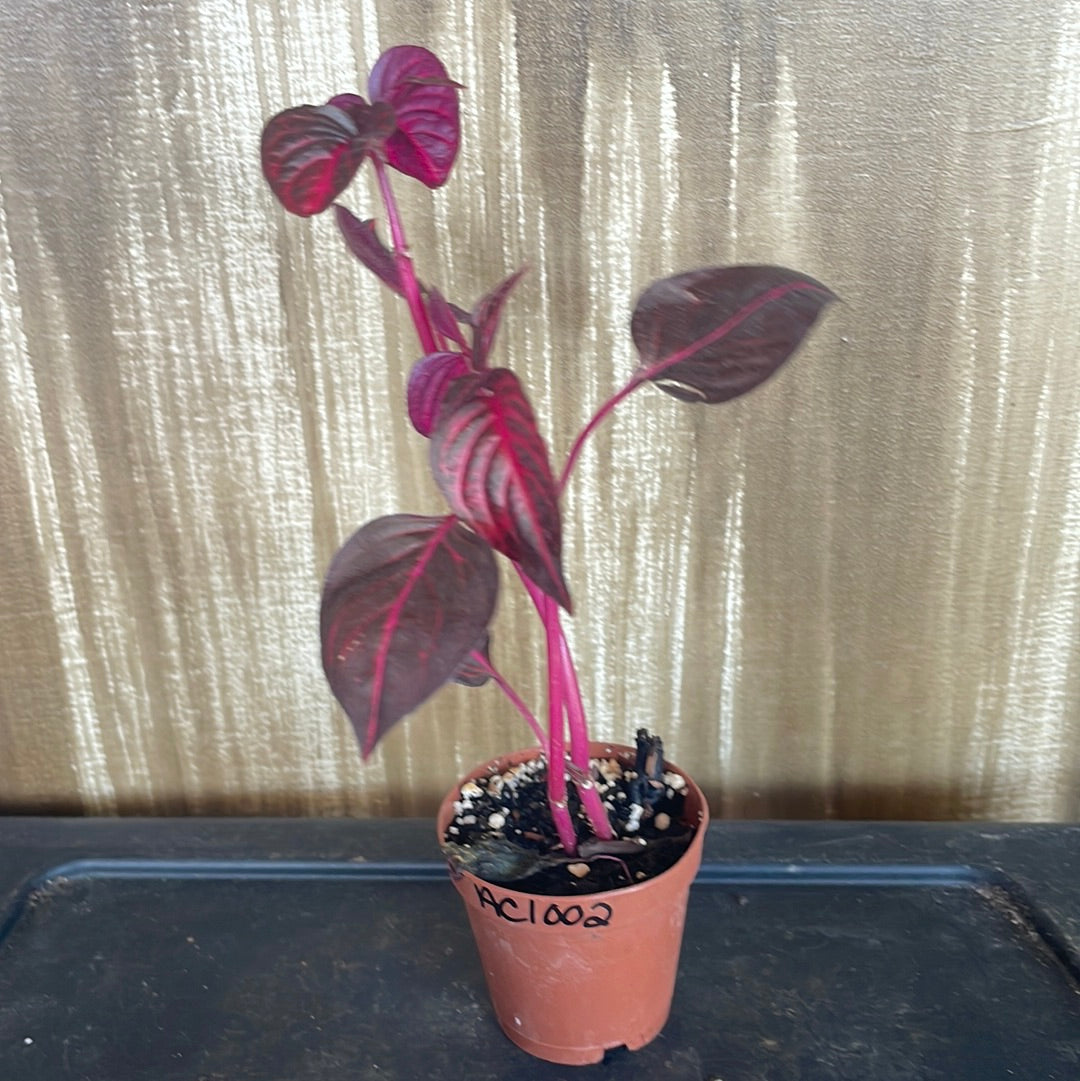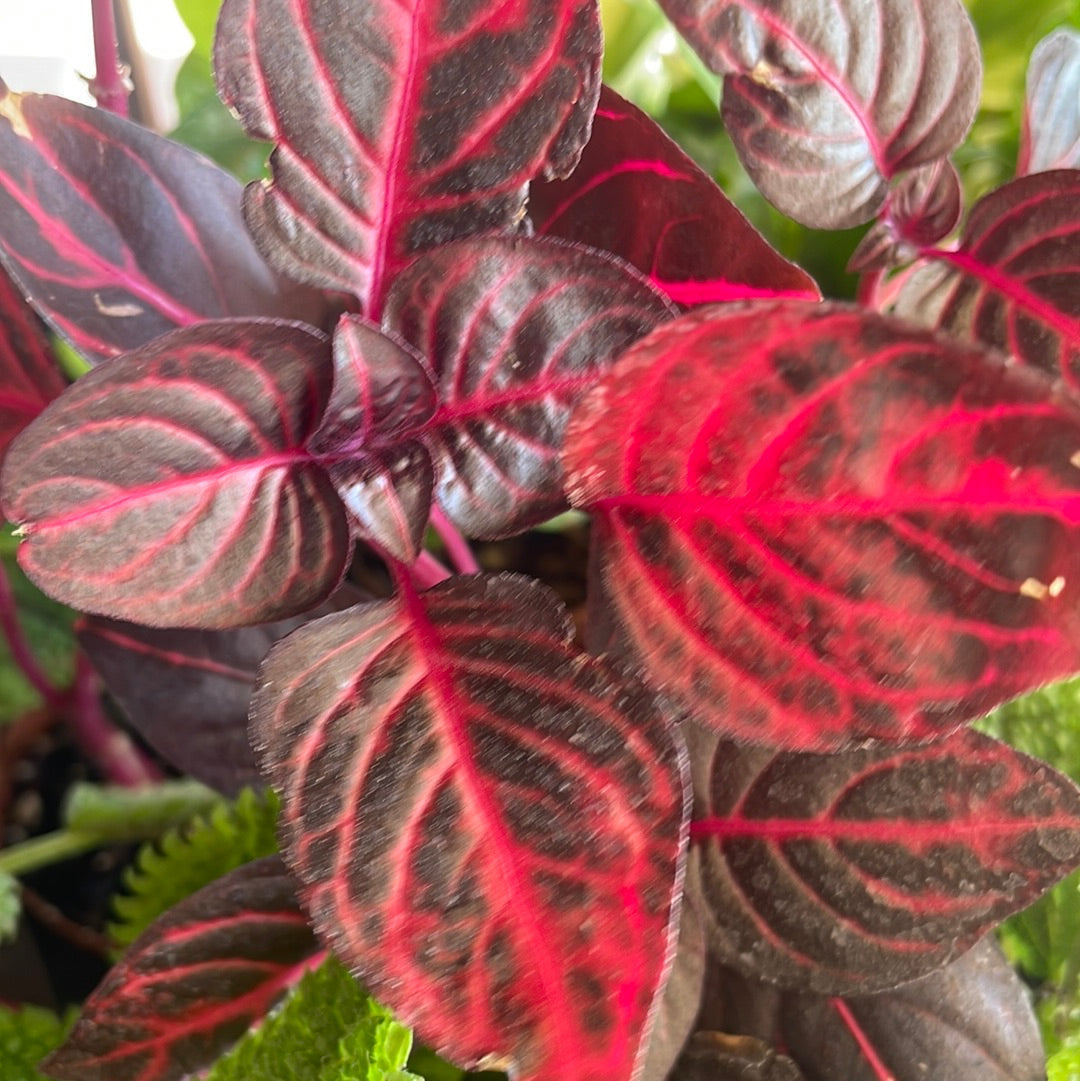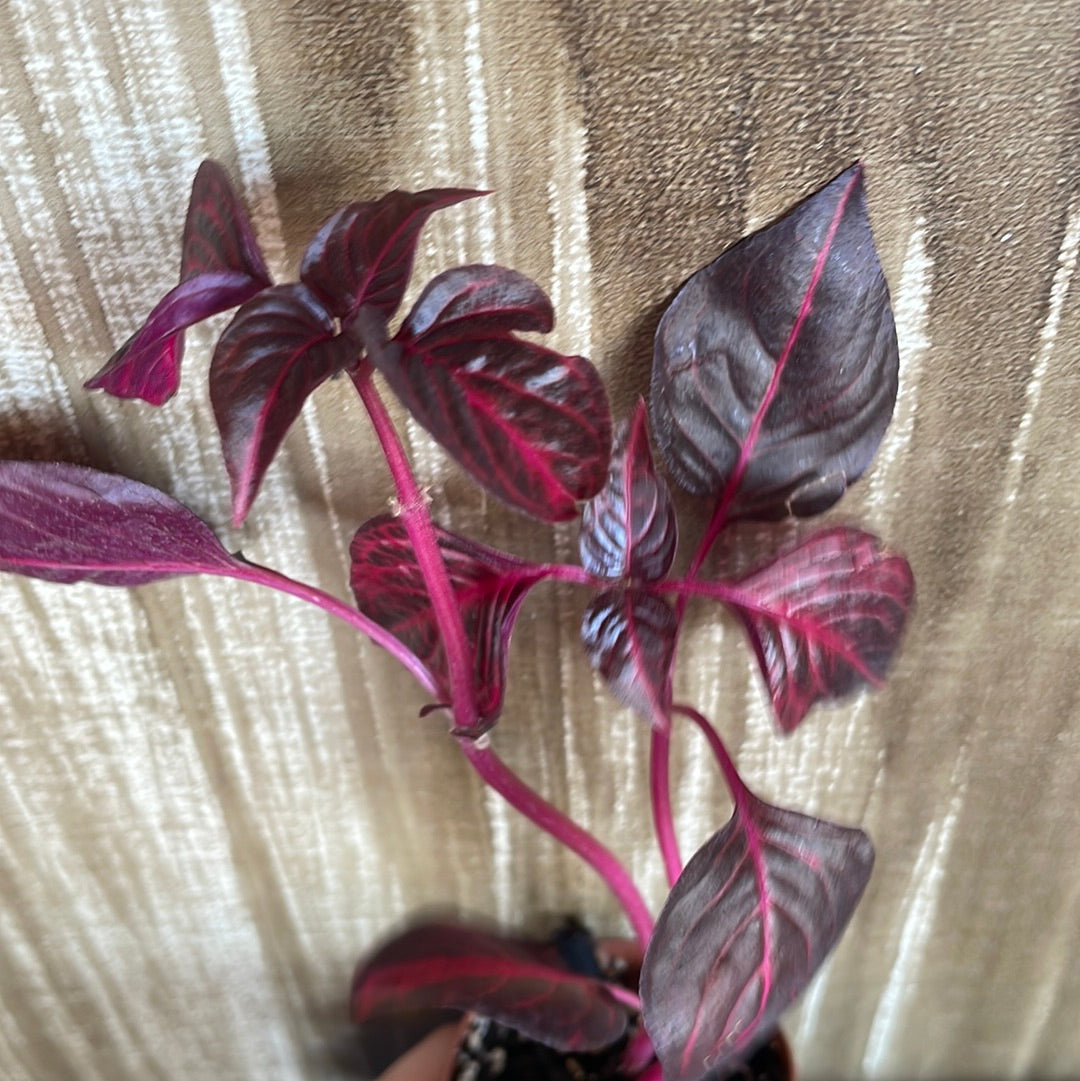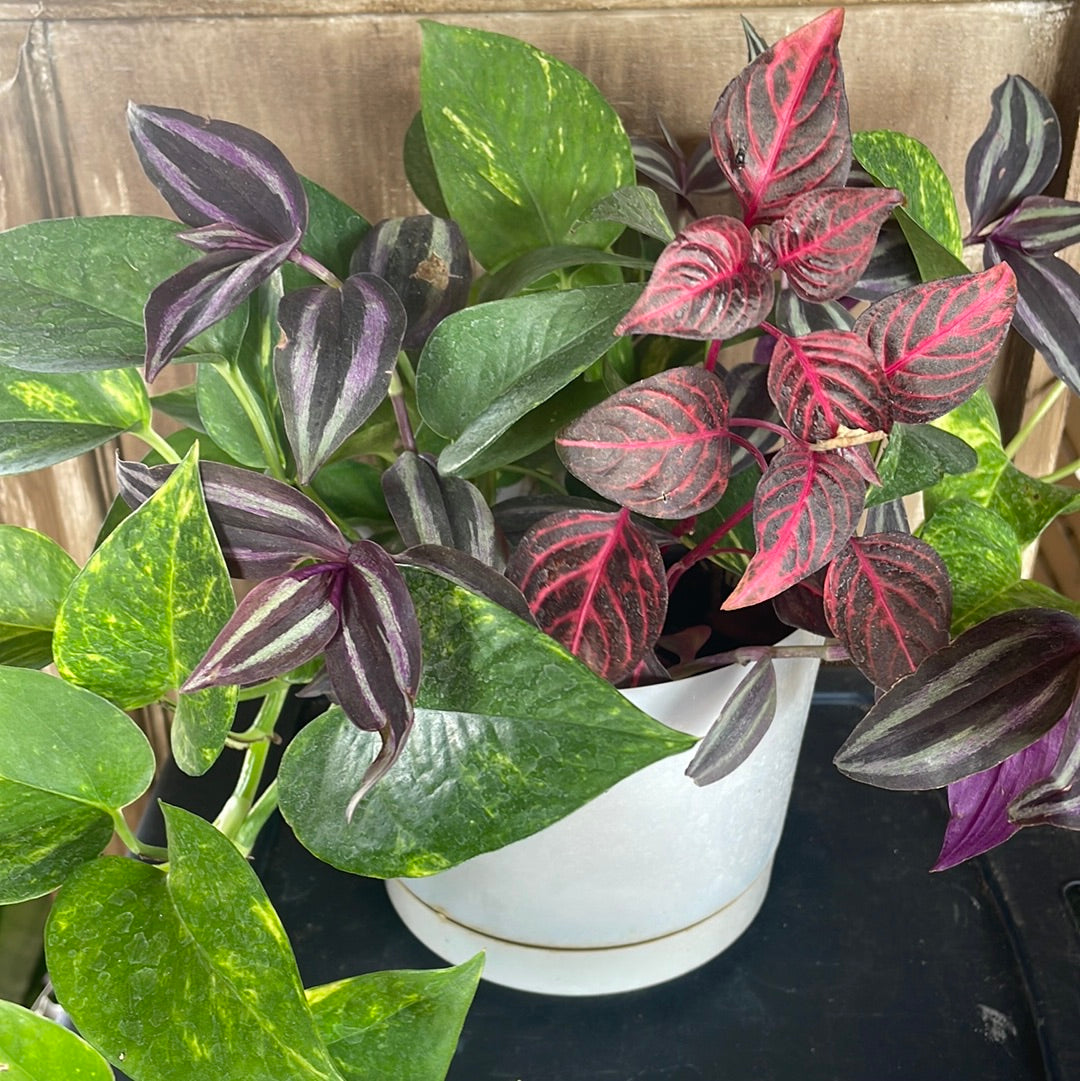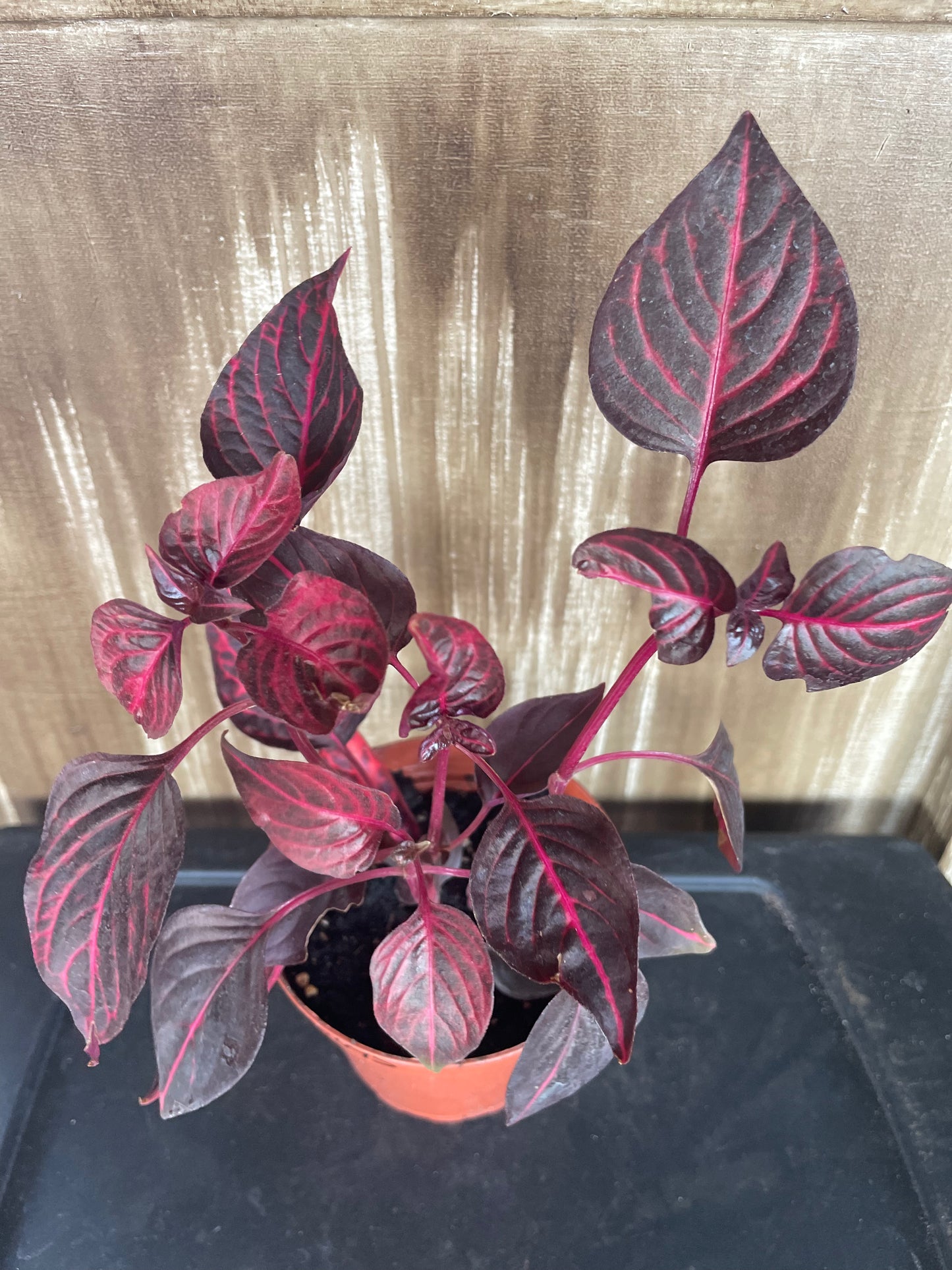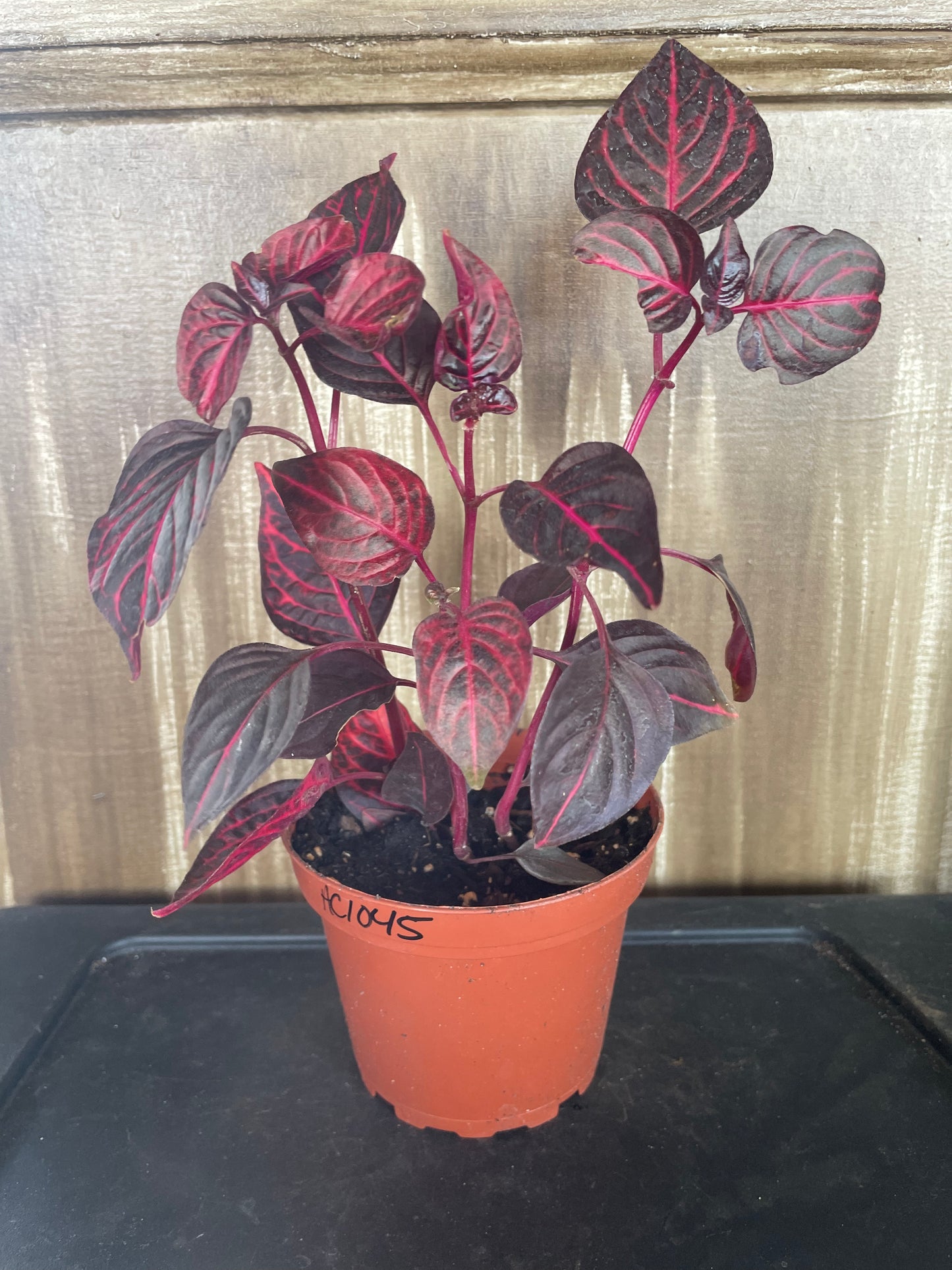Herbst's Bloodleaf
Couldn't load pickup availability
**Herbst's Bloodleaf**
**A Unique and Vibrant Foliage Plant**
Herbst's Bloodleaf (Iresine herbstii), also known as Beefsteak Plant or Chicken Gizzard, is a stunning and distinctive foliage plant that is prized for its vibrant and richly colored leaves. Native to South America, this tropical perennial is a popular choice among indoor and outdoor garden enthusiasts who seek to add a touch of vivid color to their spaces. Its striking foliage makes it an excellent choice for adding contrast and drama to both gardens and interior settings.
**Description:**
Herbst's Bloodleaf boasts large, lance-shaped leaves that can range in color from deep burgundy and scarlet to purple, with veins that often display shades of pink or red. The leaves have a glossy texture, enhancing their eye-catching appeal. This plant can grow up to 12-18 inches (30-45 cm) in height, forming a compact and bushy growth habit. In the right conditions, it may also produce small, inconspicuous flowers, though the main attraction remains its foliage.
**Care Guide:**
**1. Light:**
Place your Herbst's Bloodleaf in bright, indirect light. While it can tolerate some direct sunlight, excessive exposure to harsh sunlight can scorch its leaves. A location with filtered sunlight or a few hours of morning sun is ideal. If grown indoors, placing it near a window with sheer curtains can provide the right balance of light.
**2. Temperature:**
Herbst's Bloodleaf thrives in warm temperatures ranging from 65-80°F (18-27°C). It's important to protect the plant from cold drafts and temperatures below 50°F (10°C), as it is sensitive to cold and can suffer damage.
**3. Watering:**
Keep the soil consistently moist but not soggy. Water when the top inch of the soil feels dry to the touch. Ensure that the pot has good drainage to prevent root rot. During the growing season (spring and summer), you may need to water more frequently, and in the dormant season (fall and winter), you can reduce the frequency.
**4. Humidity:**
Herbst's Bloodleaf appreciates higher humidity levels. If you're growing it indoors, consider placing a humidity tray nearby or misting the plant regularly to provide adequate humidity. This is especially important in dry indoor environments.
**5. Soil:**
Plant Herbst's Bloodleaf in well-draining, rich potting mix. You can add perlite or sand to enhance drainage. A mixture of peat moss, perlite, and a bit of compost works well to support its growth.
**6. Fertilization:**
Feed the plant with a balanced liquid fertilizer every 4-6 weeks during the growing season (spring through summer). Avoid over-fertilization, as this can lead to leggy growth and decreased leaf color intensity.
**7. Pruning:**
Regularly prune your Herbst's Bloodleaf to encourage bushy growth and maintain its shape. Pinching off the growing tips can help promote branching.
**8. Pests and Diseases:**
Watch out for common houseplant pests such as spider mites and aphids. Keep a close eye on the underside of leaves and treat any infestations promptly with appropriate insecticidal soap or neem oil.
By following these care guidelines, you can enjoy the captivating beauty of Herbst's Bloodleaf and create a striking focal point in your indoor or outdoor space.
